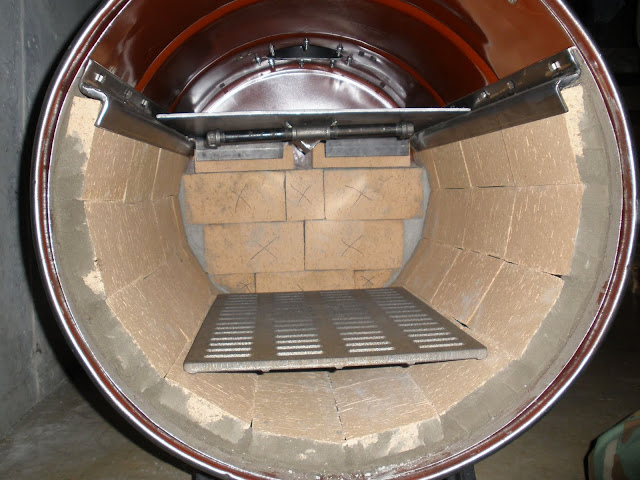Wood Stoves Require A Little Skill And Why
Your small neat wood burning stove most likely has a large exhaust stack opening on the top and usually some sort of small low adjustable vent(s) to regulate the amount of fresh air/oxygen down low on one or more of the sides or door.
You will need a long exhaust ("stove pipe") running from the stove up thru the ceiling and roof and several feet above the roof depending upon your snow load. Generally speaking, the longer the stove pipe the better the stove will draw.
Our building codes require triple wall stove pipe thru the ceiling, attic and on out thru the roof. I always use stainless steel. Expensive, but lasts a very long time. Follow the building codes when going thru the attic containing insulation. Very important. Safety first.
The draft or draw can be regualated by adjusting the small vents in the lower part of the stove belly. The more open they are, the more air is drawn into the stove and the hotter it gets. You can actually get parts of the stove glowing dull red which is bad.
To start up the stove, experiment with newspaper, grocery bags, etc., over which you place kindling of a size you find that works, then a few thin pieces of wood, then a few pieces of split wood. We use Madrone down here in SW Oregon. Abundant in our woods.
Leave the vents 100% open to start. Once going good, adjust the vents to suit you. I remove the flue damper from my stoves....don't need it and it may create a situation that when closed the smoke might bellow out of the stove inside the cabin. "Thuffing". Yuck!
You will quickly learn what exactly your wood stove wants and needs and what kind of wood works the best for you. Dryer wood is better. I could go from dead cold to boiling water for oatmeal and coffee in about 15 minutes. Lasted 8 hours on one loading. Small stove bought at an auction.
My stove had a flat top surface that let me cook off the top of it. Pork or Elk chops tasted and smelled soooos good. The Yellow Lab LOVED the wood stove in the winter. She had three positions to warm herself up. Me also. Very clean inside the cabin.
After you have gained experience with your wood stove and have a good supply of DRY hardwood (softwood in a pinch) you will be able to light, run up, regulate and heat/cook with your wood stove without producing ANY visible smoke. Takes practice, but doable.
You will proudly wear your procured burn scars from your wood stove. Can't be helped. You will burn yourself over time. No big deal. Don't ever leave the cabin if you have just filled your stove. Wait until it settles down. Safety first using wood. HB of CJ (old coot)










